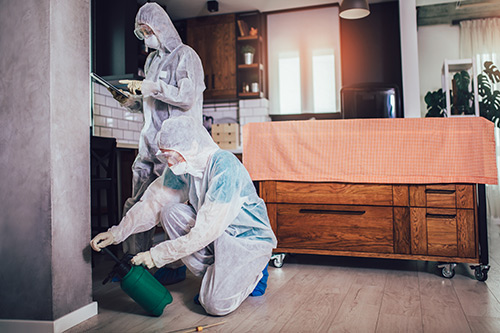
As moving season heats up across the United States, renters should take key steps to help protect their home and family. Smoke alarms help provide an early warning in the event of a fire emergency. However, a significant percentage of renters claim not to have a smoke alarm in their home or test their alarms regularly*.
Residential rental property owners and their tenants share the responsibility to ensure adequate protection against the threats of smoke and fire. Smoke alarms are widely required across housing types in the United States, and many jurisdictions further require carbon monoxide alarms. Working together, property owners and tenants may establish regular maintenance like battery replacement and equipment testing schedules to help reduce risk.
Signing a new lease or renewing a current one is an opportune time for property owners and tenants to take inventory of their alarms and make sure they are working properly, and to ensure tenants know what to do in case of an emergency.
Below are some fire safety tips for renters and property owners to help guide discussions between property owners and tenants, ultimately ensuring that both parties are ready for the unexpected:
1. Every level, every bedroom
The National Fire Protection Association (NFPA) recommends that smoke alarms be installed on every level of the home, including the basement, and inside each bedroom. It's also important to keep CO, known as the "silent killer," in mind. CO is a colorless, odorless and tasteless gas that can be potentially poisonous. The only way to detect a CO leak is with working CO alarms, which should be installed on every level and near all sleeping areas.
2. Test and maintain
Once alarms are installed, an important fire safety tip for renters and property owners is to maintain them by testing them regularly and replacing the batteries at least every six months. For a battery that lasts the life of the alarm and for convenient protection, install 10-year sealed battery alarms, like the First Alert 10-Year Sealed Battery Smoke and CO Alarm. 10-Year sealed battery alarms eliminate the need to replace the batteries and late-night battery chirps for a decade.
3. Alarms don't last forever
Be sure to replace outdated units. If you cannot remember the last time you installed an alarm, chances are, it's time to replace it. Alarms are on duty 24/7 and need to be replaced every 10 years.
4. P.A.S.S. the fire extinguisher
Beyond alarms, having fire extinguishers – and knowing how to use them – is an important fire safety tip for renters to help maintain a safe residence. When you need to act quickly, a simple way to remember how to use a fire extinguisher is with the acronym P.A.S.S. Simply pull the pin, aim the nozzle at the base of the fire, squeeze the trigger and sweep from side to side. Place fire extinguishers in common areas such as the kitchen, the garage and on every level of the home. Once your home is properly equipped, check to make sure that they're in working condition and are not damaged, dented or rusted.
Properly installed and regularly maintained fire safety equipment is key to maintaining a safe household.
Source: firstalert.com









